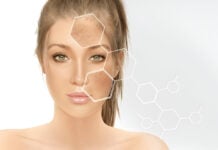Next-gen sunscreens: More than just UV protection?
Sunscreens are applied as the first line against the harmful effects of ultraviolet (UV) radiation and are patients’ attendant problems like premature aging or sunburn and skin cancer. However, with the new innovations, sunscreens have come out as active protectors rather than passive barriers. The new generation sunscreens now provided interesting features such as DNA repair enzymes and protection against infrared (IR) radiation for addressing deeper skin damage in a molecular way. Now, there are more sophisticated sunscreens that go beyond the basic SPF user’s requirement, ushering in new possibilities in therapeutic, intelligent sun care.
Understanding the Limitations of Traditional Sunscreens
Traditional sunscreens are primarily intended for the protection against ultraviolet B (UVB) and ultraviolet A (UVA) rays. While the UVB rays are responsible for causing sunburns, the UVA rays penetrate deeper into the skin and contribute to photoaging and DNA mutations that in a further step may cause cancer (Narayanan et al., 2010). Broad-spectrum sunscreens are therefore important one step with these concerns but still do not protect the skin from the complete solar spectrum, which includes infrared (IR) radiation and visible light—two others that can induce oxidative stress and cellular damage (Schieke et al., 2003).
Furthermore, neither the total protection of the UV rays is possible. Some damage must occur, and if that damage is not repaired, it accumulates with time to accelerate skin aging and raise carcinogenic risk. This is when the new sunscreens come into action.
DNA Repair Enzymes: Healing at the Molecular Level
A revolutionary breakthrough in sun protection is the application of DNA repair enzymes within sunscreens. Thus enzymes actually work with the skin’s inherent repair systems by detecting and correcting the damage done by UV rays to the DNA.
The most studied among the enzymes are:
- Photolyase: The plankton-derived enzymes repair cyclobutane pyrimidine dimers (CPDs)-a common DNA lesion from UVB radiation.
- T4 Endonuclease V: isolated from bacteriophage, this enzyme recognizes and excises the damaged DNA strand for repair.
Topical application of liposome-encapsulated photolyase significantly reduced UV-induced CPDs and mediated the prevention of immunosuppression. The Journal of Drugs in Dermatology published this result: a clinical study showing that sunscreens formulated with T4 endonuclease V reduced the development of actinic keratoses in patients with xeroderma pigmentosum, a genetic disease characterized by extreme sensitivity to UV (Stege et al., 2000). In other words, the meaning of these enzymes is, rather than the protection of the skin, it also gives the same stem along with repairing the work of damage. This shows long-term healthy skin.
Infrared (IR) Radiation Protection: Addressing the Invisible Threat
More than 50% of solar energy that reaches the skin consists of infrared radiation, that is, the near IR. While somewhat subtle and not as easily appreciated as sunburns, the short-term infrared exposure generates reactive oxygen species (ROS) responsible for damaging the cellular apparatus and collagens and thus driving skin aging (Schroeder et al., 2008). Modern sunscreens have now incorporated antioxidants as well as specialized optical filters to counteract this oxidative stress. Ingredients like vitamin C, vitamin E, green tea extract, coenzyme Q10, and lipochroman are being formulated today in sunscreen preparations with the idea of neutralizing ROS and enhancing skin defense.
A study published in Photodermatology, Photoimmunology & Photomedicine indicated the sunscreen with antioxidant ingredients was able to reduce MMP-1 (the key enzyme involved in collagen degradation) expression induced by IR-A (Cho et al., 2009). This study thus emphasizes the need to couple UV filtering agents with antioxidative defense mechanisms for comprehensive protection.
The Rise of Multifunctional Sunscreens
Consumers nowadays demand a lot more from their skincare-and the brands are answering their call with multifunctional sunscreens that combine high SPF with not only antioxidant protection, DNA repair, and anti-pollution, but hydration. What once were single-task products have now evolved into multipurpose solutions for skin health.”
Dermatologists recommend these advanced sunscreens greatly for:
- History of skin cancer or precancerous lesions
- Photoaging issues
- Chronic sun exposure (e.g. outdoor workers or athletes)
- Conditions such as melasma and rosacea, which are further aggravated by IR and visible-light exposure
These innovations mark a shift in dermatology away from protection and toward prevention and repair.
Smarter Sunscreens for Healthier Skin
Sunscreens are no longer merely UV shields but instead smart and active formulas that further play a role in protecting, repairing, and supporting skin health. Their new generation of sunscreens integrates DNA repair enzymes and infrared protection, thus providing defense at both surface and cellular levels. For consumers interested in long-term skin health, using sunscreens with those features could mean less wrinkles, a lower incidence of skin cancer, and an overall healthier appearance.
As science continues to produce advancements, so will these advancements continue to be encompassed within sun protection products. A time in the near future will arise when we shall see sunscreens that will be more personalized, responsive, and therapeutic, thus reaffirming the adage that innovation is the best form of skincare.
References
- Cho, S., Shin, M. H., Kim, Y. K., Seo, J. E., Lee, Y. M., Park, C. H., & Chung, J. H. (2009). Effects of infrared radiation and heat on human skin aging in vivo. Photodermatology, Photoimmunology & Photomedicine, 25(6), 305–310. https://doi.org/10.1111/j.1600-0781.2009.00450.x
- Narayanan, D. L., Saladi, R. N., & Fox, J. L. (2010). Ultraviolet radiation and skin cancer. International Journal of Dermatology, 49(9), 978–986. https://doi.org/10.1111/j.1365-4632.2010.04474.x
- Schieke, S. M., Schroeder, P., & Krutmann, J. (2003). Cutaneous effects of infrared radiation: From clinical observations to molecular response mechanisms. Photodermatology, Photoimmunology & Photomedicine, 19(5), 228–234. https://doi.org/10.1034/j.1600-0781.2003.00048.x
- Schroeder, P., Lademann, J., Darvin, M. E., Stege, H., Marks, C., Bruhnke, S., … & Krutmann, J. (2008). Infrared radiation-induced matrix metalloproteinase in human skin: implications for protection. Journal of Investigative Dermatology, 128(10), 2491–2497. https://doi.org/10.1038/jid.2008.96
- Stege, H., Roza, L., Vink, A. A., Grewe, M., Ruzicka, T., Grether-Beck, S., & Krutmann, J. (2000). Enzyme plus light therapy to repair DNA damage in ultraviolet-B-irradiated human skin. Proceedings of the National Academy of Sciences, 97(4), 1790–1795. https://doi.org/10.1073/pnas.97.4.1790
- Yarosh, D., Klein, J., O’Connor, A., Hawk, J., & Kripke, M. (2001). DNA repair enzyme liposome lotion reduces the incidence of actinic keratoses in sun-damaged human skin. Journal of Drugs in Dermatology, 1(4), 369–374.












